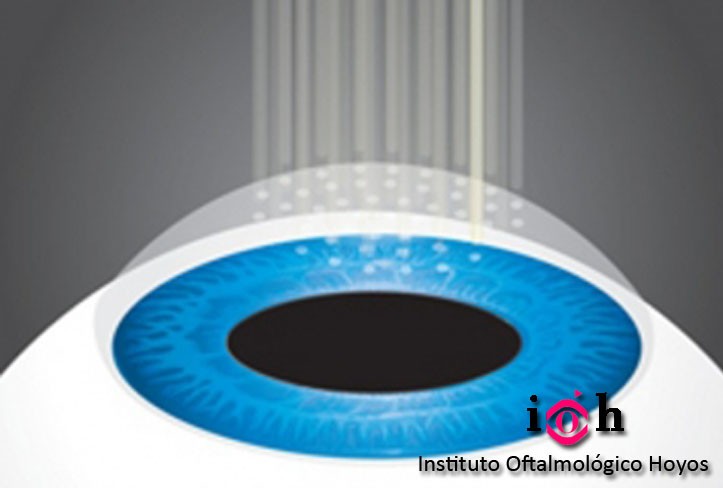EXCIMER LASER PRK

PRK is a quick and safe procedure, which is performed under topical anesthetic (anesthetic drops ) and does not require the patient to be hospitalized. This is one of the most advanced and safest techniques to correct refractive defects. It is an extra-ocular procedure (the part of the eye which is worked on is the exterior one : the cornea) and recuperation is fast with the least risk possible to the eye.
This technique consists in removing the corneal epithelium with the aid of a cotton hemostat after applying diluted alcohol for some seconds. Once the epithelium has been removed, the laser is applied, which is going to sculpt the cornea by changing its shape and correcting the refractive defects (myopia, hyperopia and astigmatism). Finally, a therapeutic contact lens is placed, which will help with the reepithelialization and which will be left for approximately 3 days.
This intervention takes approximately 10 minutes and the patient may experience discomfort in the eye and pain during the first 2-3 days. Vision will take some days to recover due to the process of reepithelialization and the patient will not notice a significant improvement until a week after surgery.
Possible complications and collateral effects of PRK.
Some patients, especially those with a high graduation, may end up with a certain residual defect, generally low. In this case , they will need correction to carry out certain specialized activities. They can be operated on a few months later to reduce this. Other patients have referred to night glare, fluctuation in vision or sensitivity to light. These defects usually disappear in a short space of time.
There may be delays in reepithelialization and corneal haze may appear.
Our extensive experience with this technique allows us to recommend PRK to our patients, with a minimal risk of complications.
Moreover, our Institute has at its disposal the latest in technology, the Excimer laser, which is computer-directed and shapes the cornea with the utmost precision.
